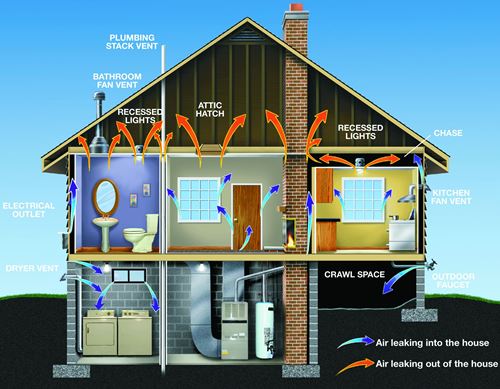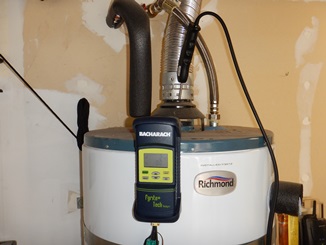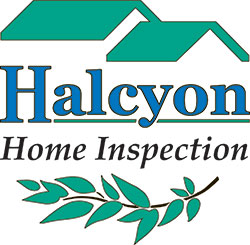Home Energy Score and Home Performance: About the Tests We Conduct
 As shown in the HERS Index (see diagram this page), most homes in the U.S today don’t fare well on energy usage.
As shown in the HERS Index (see diagram this page), most homes in the U.S today don’t fare well on energy usage.
A home contains different systems that interact with each other to provide a comfortable environment for the home’s occupants. An inefficiency in one or more of these systems will result in wasted energy and reduced comfort.
The term ‘energy audit’ is an umbrella term used to describe the different methods used to determine how much energy a home uses and how much it’s wasting.
Utilizing a variety of diagnostic tools (blower door, duct blaster, and thermal imaging camera) a home energy audit can pinpoint areas that are potentially wasting energy, increasing utility bills, and possibly making the home unhealthy for its occupants.
Home Energy Score (HES)
Out of the approximately 130 million homes in the U.S., about 80 million of them were built between 1980 and 2000. These 80 million homes pre-date the modern energy standards and are associated with higher energy use and operating costs per square foot.
Download an example Home Energy Score report >>
The average American household spends about $2,000 on energy every year with about 30% of that energy being wasted due to inefficiencies in the home.
A Home Energy Score (HES) was developed by the DOE and it national laboratories to provide home owners and potential buyers comparable and credible information about a home’s energy use. Like a miles-per-gallon rating for a car, the Home Energy Score is based on a standard assessment of energy-related assets to easily compare energy use across the housing market.
The Home Energy Score Report estimates home energy use, associated costs, and provides energy solutions to cost-effectively improve the home’s efficiency. Each Home Energy Score is shown on a simple one-to-ten scale, where a ten represents the most efficient homes. Use the Home Energy Score Interactive Label to explore some of the information provided.
As a DOE-trained Home Energy Score Assessor I can provide the Home Energy Score as part of a home inspection package, or as a standalone product. Local and national Partner organizations help Assessors meet training, mentorship, and quality assurance requirements.
Blower Door Test
Used to determine a building’s air tightness; homes can lose as much as 30% of the air you paid to heat or cool through leaks. A powerful fan attached to an exterior door pulls air through the house, and the assessor compares the inside and outside air pressure to pinpoint leaks.
Duct Leakage Test
Used to detect leaks in your heating/cooling ducts. Leaky ducts may account for 20% or more of a home’s energy loss.
That’s why some rooms never get warm or cooled—the air never gets there.
A duct blaster pressurizes a house’s HVAC duct system and measure air leakage from gaps and cracks in the ductwork.
Combustion Safety Test

A safety test to monitor the levels of exhaust gases from fuel burning appliances in the home. Older appliances may draw air from inside the home or a crawl space.
These appliances also produce exhaust gases that may be released inside the house either knowingly like stoves, ovens, fireplaces or space heater, or unknowingly from leaky flues, cracked heat exchangers or back drafting.
Title 24 and HERS Verifications
Title 24 is the section of the California Building Standards Code which sets forth the energy efficiency requirements for new (and altered) homes and commercial buildings. These requirements were created by the California Building Standards Commission in 1978 in response to a legislative mandate to reduce California’s energy consumption. The standards are updated periodically by the California Energy Commission to allow consideration and possible incorporation of new energy efficiency technologies and methods.
 Because energy efficiency reduces energy costs, increases reliability and availability of electricity, improves building occupant comfort, and reduces impacts to the environment, standards are important and necessary for California’s energy future.
Because energy efficiency reduces energy costs, increases reliability and availability of electricity, improves building occupant comfort, and reduces impacts to the environment, standards are important and necessary for California’s energy future.
If needed by your local building department, a Title 24 compliance report will be the proof that the work being done on your home or commercial property meets or exceeds the minimum standard.
For many residential projects one or more HERS verifications may be required. A HERS verification is an inspection and/or diagnostic testing performed by a special third-party inspector called a Home Energy Rating System (HERS) rater. HERS verifications are mandatory for nearly all new homes and existing homes where new or replacement HVAC systems or ductwork are installed.
As a HERS rater, I am certified to perform the field verification and diagnostic testing that may be required to demonstrate and document compliance with the energy standards. HERS raters are considered special inspectors by enforcement agencies and shall demonstrate competence, to the satisfaction of the enforcement agency, to conduct the required visual inspections and diagnostic testing of the regulated energy efficiency features installed in the dwelling.
HERS raters cannot be employees of the builder or contractor whose work they are verifying. Also, HERS raters cannot have financial interest in the builder’s or contractor’s business, or advocate or recommend the use of any product or service that they are verifying.


